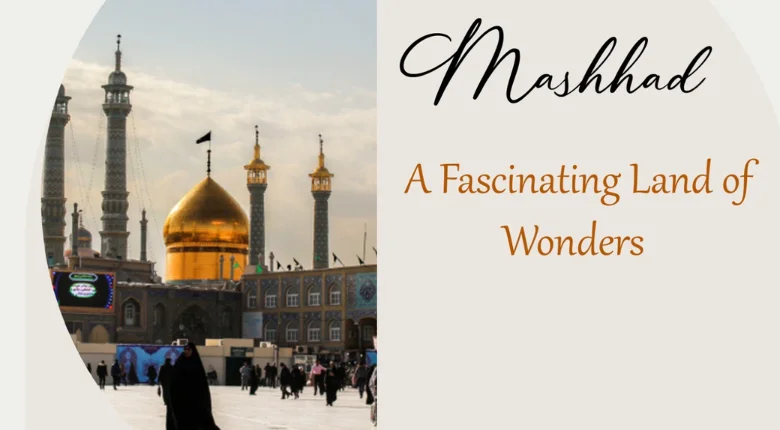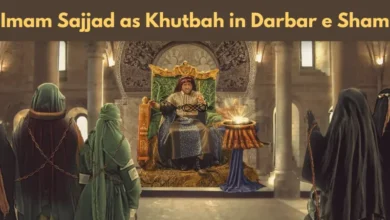Mashhad: A Fascinating Land of Wonders

Imam Raza City ‘s Mashhad, the Land of Wonders:
Once a tiny community called Sanabad, the holy shrine of Imam Raza (A.S.) called Mashhad al-Raza (the tomb sanctuary of Imam Raza (A.S.)), also called Mashhad, quickly turned into a large city. Mashhad is also one of the most visited pilgrimage destinations in the world. At the holy shrine of Imam e Raza (A.S.), miracles happen often, so the holy city of Mashhad is also known as “The Land of Miracles.”
The holy shrine of Imam Raza In Mashhad
The holy shrine of Imam Raza (A.S.), in Mashhad with its beautiful constructions and structures, is one of the oldest and most beautiful religious and historical attractions in the world.
The grand complex of the holy shrine is round and made up of six courtyards (Sahn), twenty-three porches (Riwaq), the Gowharshad Mosque, Razavi University of Islamic Sciences, the Islamic Research Foundation, museums, the Central Library Complex, offices, a hospital, an inn, and buildings for performing ablutions. The holy place is currently 267079 square metres in size.
Merits of Mashhad Ziyarat:
There are many stories about the spiritual reward of Imam Raza’s (A.S.) pilgrimage, or ziyarat in Mashhad. In some circles, its spiritual reward is said to be the same as the martyrdom of the martyrs of Badr. In other stories, its spiritual reward is said to be the same as a hajj pilgrimage.
Healed Miraculously in Mashhad Holy shrine of Imam Raza:
The holy shrine of Imam Raza (A.S.) is a special place where miracles often happen. Imam Raza (A.S.) has healed thousands of seriously ill and incurable patients through miracles at the holy shrine.
Naqqar Khanna (Beating Kettle Drums) at the Holy Shrine of Imam Raza (A.S.):
In the past, people would beat kettle drums (Naqqarah) when something important happened or when people came to royal halls. When Baisonqor, Shahrukh Mirza’s son and the Timuri Sultan, came to Mashhad from Herat in 860 AH/1455 AD, kettle drums were played to let people know he was at the holy shrine of Imam Raza (A.S.).
He went to the holy place to find a cure for his illness, which doctors had not been able to fix. Baisonqor was magically cured in the holy shrine of Imam e Raza (A.S.), and the kettle drums were played again. Since then, this has been done every day in the holy shrine before sunrise and sunset (except during times of mourning). When a sick visitor is suddenly healed at the holy shrine, the kettle drums are also played.
The sayings of Imam Raza (A.S)
Whoever compares Allah to the things he made is a polytheist, and whoever gives Him something that has been banned is a disbeliever (Wasail ush Shia, Vol. 18, P. 557).
Faith is one step above and more beautiful than Islam. Piety is one step above faith, and certitude and certainty are one step above faith. Nothing has been given to the sons of Adam (A.S.) that is more beautiful and good than certitude. (Bihar ul Anwar, Vol. 78, P. 338)
Faith is built on four things: trusting and depending on Allah, being happy and at peace with the divine will, submitting to Allah’s will and laws, and handing over (the affairs) to Allah. (total resignation and reassignment to Allah). (Bihar ul Anwar, Vol. 78, P. 338)
And faith means doing the things you have to do and not doing the things you shouldn’t. Faith is recognizing and knowing Allah in your heart, accepting and confessing Him with your tongue, and putting your beliefs into action with your body.
(Tuhaf ul Aqool, P 422)
One day, Imam e Raza (A.S.) talked about the Quran, and he said, “That is the firm rope of Allah, the firmest handhold, and the ideal and model path. It guides and leads to the Garden of Eden and saves from the fire (of Hell).”
It doesn’t get worn down by the passing of time, and it doesn’t lose value when it’s repeated over and over again. This is because it wasn’t made to exist only for a certain age or time, but rather as proof and logic for every individual. Falsehood can’t get in from the front or the back.
It has been sent down by Allah, the All-Knowing and All-Glorious. (Bihar ul Anwar, Vol. 92, P. 14)
Rayyan says I said to Imam e Raza (A.S.): “What do you say about the Quran? So he said, “It’s Allah’s word; don’t go beyond it or go before it, and don’t look for direction anywhere else but in it, or you’ll go misguided.” (Bihar ul Anwar, Vol. 92, P. 117)
Self-mockery is when you do six things but not the other six.
- Asking Allah for mercy with words but not with the heart asking Allah for help without doing anything to help yourself.
- Deciding to do something without making sure it’s safe to do so
- Asking to be saved from hell’s fire without giving up greed
- Asking Allah for heaven without going through the hard things that come with it
- Thinking about Allah without expecting to meet him
- “Good morality will be considered more than anything else in the Meezan.
The Martyrdom of the Holy Imam (A.S.):
The cruel caliph was afraid of how famous the Holy Imam (A.S.) was getting. So he planned to kill the Holy Imam (A.S.). In 203 A.H./818 A.D., Ma’mun put Imam e Raza (A.S.) in prison in Sarakhs.
Then, Humaid bin Qahtabah took Imam Raza (A.S.) to Sanabad and locked him up in his house. Ma’mun poisoned the Holy Imam (A.S.) in that house in the morning of the last day of the month of Safar in 203 A.H./818 A.D.
The Holy Imam (A.S.) was in a lot of pain and was very tired. That same day, in the evening, the Holy Imam’s (A.S.) soul went to heaven. The Holy Imam (A.S.) was buried at night in the same part of the palace where His Holiness had predicted he would be buried during his first visit to Humaid bin Qahtabah’s house in Sanabad in 201 A.H. or 817 A.D.




